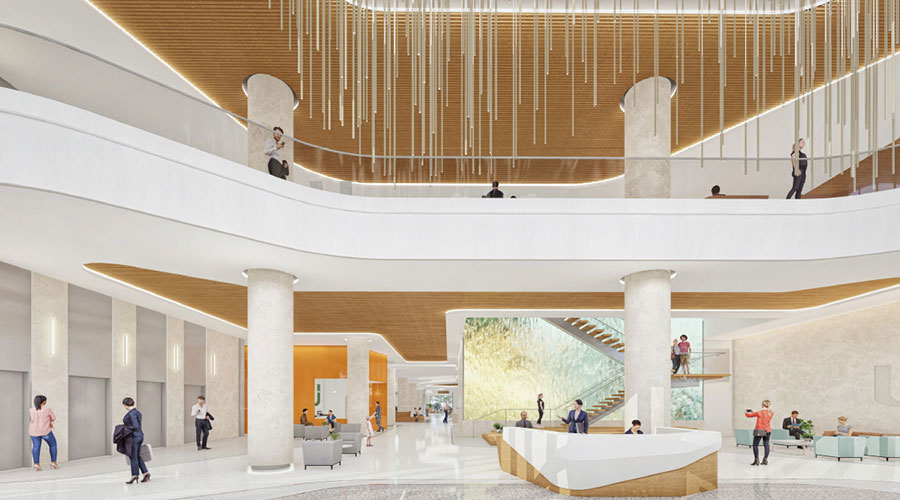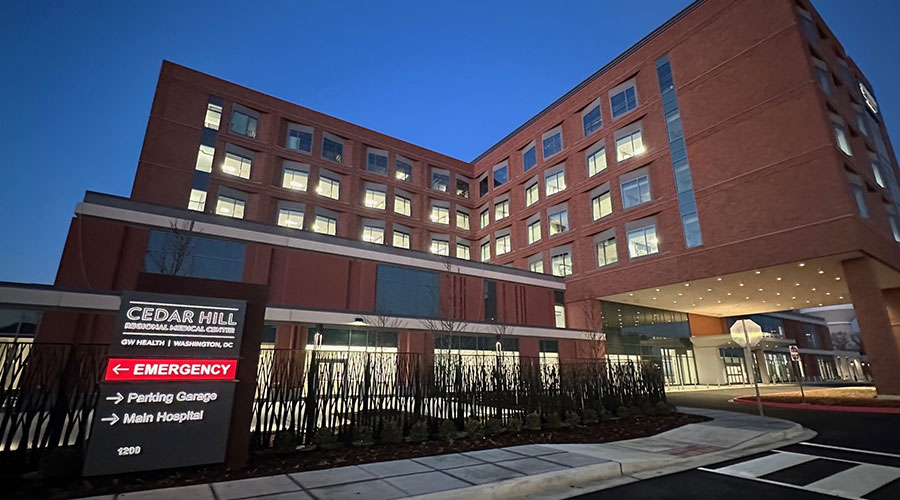When we think about the direct impact COVID-19 has had on our lives, healthcare technology and design might not be top of mind. We think about lives lost, financial hardships, and vaccines that have continued to provide hope. But a lasting effect of the pandemic isn’t just the chaos it’s created. It’s the important steps we’ve taken for the future of healthcare.
As we continue to navigate COVID-19, it’s crucial to understand the way the future of facility management will shift with these technological advancements and facility design updates in healthcare.
Healthcare technology evolution
The use of technology and its innovations in healthcare advanced 10-20 years in just a few months during the pandemic. It had to. The pandemic halted face-to-face interaction and moved it to virtual visits en masse. Software organizations quickly began a race to create and update their video conferencing platforms to support a society at home. We had to raise the human factor of technology to benefit patients without humans being in the same room.
With physical spaces off limits, facility managers and associates not only adjusted to remote work, as well as the new technology to receive lab reports and critical status updates virtually. On the clinical end, patients used wearable technology such as fitness smartwatches and heart rate monitors to allow healthcare professionals to accurately diagnose symptoms when patients were not physically in a controlled environment. In the case of managing the physical space of healthcare facilities, some facilities technicians improvised, such as putting a camera in front of an HVAC unit and dialing in to monitor and ensure machines were running smoothly from states away.
This technology has been around for some time, but facilities had been reluctant to implement it due to time and hiring constraints. But COVID-19 changed that, prompting facilities around the globe to adapt as quickly as possible to changes in technology to benefit patients. All in all, COVID-19 didn’t just create a healthcare technology evolution. It created a revolution.
Impact on management and design
Perhaps one of the most visible outcomes of the pandemic has been the way we design spaces. In healthcare, appropriate social distancing and precautions will remain intact long after the pandemic is over in order to maintain a healthy, safe environment. The pandemic has affected four main areas of hospitals:
Cafeterias. Buffet lines are gone. Closed-space cafeteria environments will slowly fade away, with more dispersed tables and the ability for grab-and-go options for patrons as part of new food service plans.
Public lobbies. Organizations will install additional social distancing signage. The new normal will include dispersed seating arrangements, plastic barriers between chairs and tables, hands-free technology in elevators, and real-time location services that allow patients and visitors to navigate healthcare facilities through kiosks or mobile devices.
Family spaces. Managers and designers must evaluate where family gathering areas are in relation to patient spaces. Thinking about the way visitors can navigate around an open area and where they can rest safely will be crucial.
Patient rooms. Managers will not see many major changes to patient rooms, but parts and pieces could be updated — for example, having the ability to change positive and negative air pressure on a room-by-room basis. During the pandemic, some facilities increased the volume and amount of air in a patient’s room through the bathroom fan. Increased airflow through the exhaust fan created a negative pressure environment to help remove contaminated air from the room, which is key in fighting respiratory illnesses. It also is plausible that facilities will deploy voice or facial recognition technology when entering a patient’s room or when technicians need to access different areas of a hospital instead of using physical badges.
Telehealth. We’ve seen firsthand that telehealth is dramatically changing the way hospitals deliver healthcare. In 2019, more than one-half of U.S. hospitals implemented some type of telehealth program in their facilities. New data suggests telehealth use increased 38 times from pre-COVID-19 levels. By increasing accessibility to doctors, physicians and specialists through virtual visits, telehealth ensures patients receive the best care at the right time and right place. We’ll also see telehealth incorporated into facility design. Think telehealth offices with special furniture pods, access to patient information on a separate easy-to-view screen, and connection directly into a facility’s interface.
Equipment now must allow for virtual communication and virtual care for patients and associates across the country, no matter the economic status or location. Innovative healthcare tools and technologies are forming a virtual community for all.
Looking ahead
What happens next for facility managers? Adaptability is key. The workforce is aging, and with it, a significant portion of the healthcare peer group will retire in the next 10 years. Today’s facility managers are much different than managers of even a decade ago. With advanced leadership skills, technology-driven brains and a knack for automation, these younger facility managers have a leg up over the competition.
We’re seeing new, innovative technology solutions come to market daily, but it is up to a facility manager to evaluate and specify the most cost- and outcome-effective technologies or their facility. Though COVID-19 caused a new technological era of care to come earlier than expected, facility managers who were prepared for this wave were able to continue delivering quality patient care and will be able to continue doing so.
Managers must adjust quickly to technological changes and design developments to benefit patients, facility personnel, and healthcare associates. While we don’t know how long COVID-19 and its variants will remain a threat, its good and bad effects on the healthcare industry will remain with us for a long time.
Mike Wood is vice president of planning, design and construction and energy at Medxcel specializing in the creation, direction, organization and administration of Medxcel's national construction portfolio. Wood leads his construction management teams with his 35 years of leadership experience and unique diverse strategic and operations knowledge in the healthcare sector. Medxcel provides healthcare service support products and drives in-house capabilities, savings and efficiencies for healthcare organizations that improve the overall healing environment for patients and staff.

 Design Plays a Role in the Future of Healthcare
Design Plays a Role in the Future of Healthcare Cedar Hill Regional Medical Center GW Health Officially Opens
Cedar Hill Regional Medical Center GW Health Officially Opens Designing Healthcare Facilities for Pediatric and Geriatric Populations
Designing Healthcare Facilities for Pediatric and Geriatric Populations Kaiser Permanente Announces New Hospital Tower at Sunnyside Medical Center
Kaiser Permanente Announces New Hospital Tower at Sunnyside Medical Center Building Disaster Resilience Through Collaboration
Building Disaster Resilience Through Collaboration